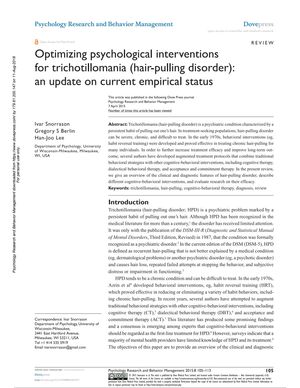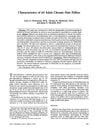Optimizing Psychological Interventions for Trichotillomania: An Update on Current Empirical Status
April 2015
in “
Psychology Research and Behavior Management
”

TLDR Cognitive-behavioral therapy is the best treatment for hair-pulling disorder, and combining it with other therapies could improve results.
The 2015 document reviews psychological interventions for trichotillomania (HPD), highlighting cognitive-behavioral therapy (CBT) as the first-line treatment. It discusses the effectiveness of habit reversal training (HRT), stimulus control (SC), cognitive therapy (CT), dialectical behavior therapy (DBT), and acceptance and commitment therapy (ACT) in treating HPD. Studies show that HRT/SC is effective, with one study reporting 64% of participants seeing significant improvement, and another indicating 85% improvement post-treatment. CBT has also been highly effective, with one study showing 100% improvement in the CBT group versus 67% with clomipramine. The document notes that while HRT/SC is effective for 50%-60% of individuals, augmenting it with CT, DBT, or ACT may enhance benefits and help maintain therapeutic gains. However, direct comparisons of these combined treatments and their long-term efficacy are lacking. The document emphasizes the need for increased awareness and training among providers to optimize treatment outcomes for HPD.

